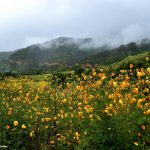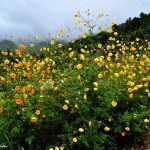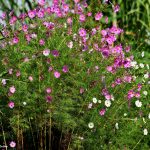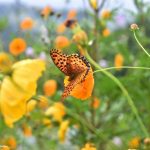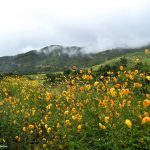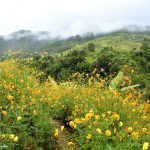 As the Autumn season is in the mid and the leaves fall from the trees and the temperature dips, a wildflower blooms in hill areas of the State.
As the Autumn season is in the mid and the leaves fall from the trees and the temperature dips, a wildflower blooms in hill areas of the State.
Cosmos also known as Ulam Raja, a wildflower of the sunflower family now blooms widely across the hill areas along the road sides and plan areas of the hill districts.
Cosmos is native to scrub and meadowland in Mexico where most of the species occur, as well as the United States, as far north as the Olympic Pennsula in Washington, Central America, and to South America as far south as Paraguay. One species, C. bipinnatus, is naturalized across much of the eastern United States and eastern Canada. It is also widespread over the high eastern plains of South Africa, where it was introduced via contaminated horse feed imported from Argentina during the Anglo-Boer War.
This plant is supposed to be edible. It is believed that Wild Cosmos was brought to South Asia by sailing Spaniards who used it as food. The flower blooms during the month of June-November.
Cosmos are herbaceous perennial plants or annual plants growing 0.3–2 m (1 ft 0 in–6 ft 7 in) tall. The leaves are simple, pinnate and arranged in opposite pairs. The flowers are produced in a capitulum with a ring of broad ray florets and a center of disc florets. Flower color is very variable between the different species. The genus includes several ornamental plants popular in gardens.
In SE Asia, Cosmos plant is used traditionally for improving blood circulation.

